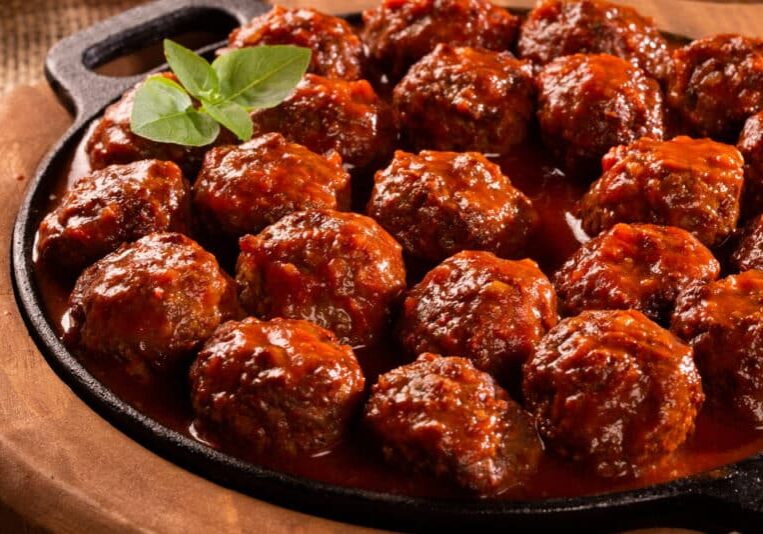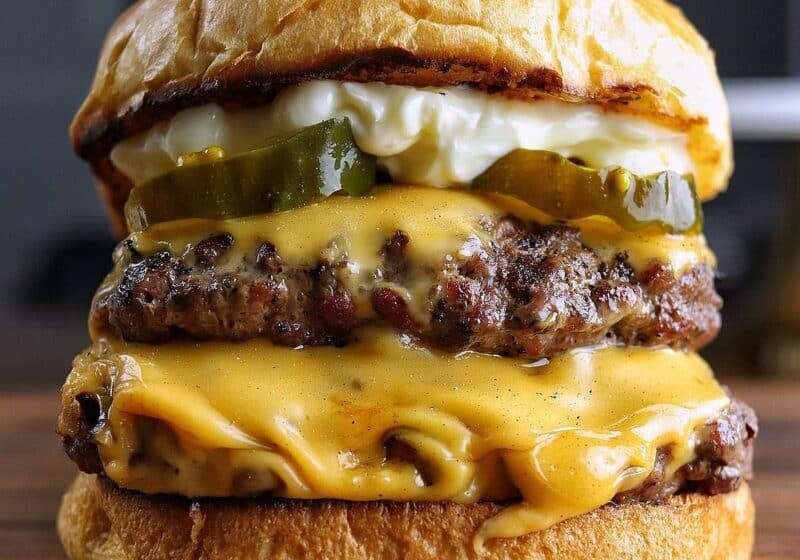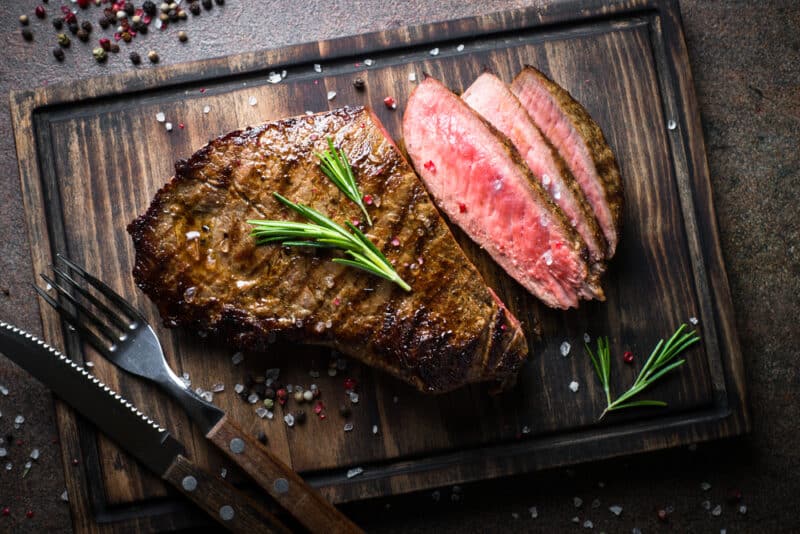How to Cool Down a Charcoal Grill Safely and Efficiently
TheGrillingMaster.com is reader-supported. If you buy something using the links on our site, we might earn an affiliate commission at no added cost to you. This helps us pay our staff to keep making awesome content for you!

Are you familiar with that post-BBQ quandary, where you’re left staring at your charcoal grill, wondering how to safely cool it off without inviting disaster? You’re certainly not alone.
Like countless other outdoor cooking aficionados, I found myself grappling with the same sizzling issue and threw myself into finding solutions. In this article, we’re dishing out a hearty serving of tips and tricks that will help chill out your charcoal grill faster than you can say “backyard BBQ.” So stick around for some genuinely cool advice!
Key Takeaways
- Wear protective gear like heat – resistant gloves and safety goggles before you start cooling down your grill to avoid burns or injury from hot coals and embers.
- Adjust the grill grates and manage the air vents to control airflow and temperature, which helps cool down the charcoal faster while preventing accidental fires.
- Spread out coals evenly using long – handled tongs to decrease heat concentration; use water sparingly to extinguish them without causing steam blasts or damaging the grill.
- Create a two – zone heat area by moving all coals to one side of the grill for direct cooking, leaving the other side for indirect cooking methods, helping in better temperature management.
- After use, thoroughly clean your charcoal grill and check that it’s completely cooled down before storing it in a well-ventilated place. Secure any loose parts to prevent accidents during movement.
Why Cooling Down Your Charcoal Grill is Important
Cooling down your charcoal grill is important to ensure safety and protect your grill from damage. Properly cooling it down can prevent accidents and extend the lifespan of your grilling equipment.
Ensures safety
Taking the time to properly cool down my charcoal grill is crucial for ensuring safety. A hot grill can be a hazard; it can ignite nearby objects, cause burns if touched, or even start unplanned fires if left unattended.
I make sure all coals are completely extinguished and check that no lingering embers could pose a threat. By managing the heat carefully and keeping an eye on temperature levels until they reach a safe point, I create a secure environment for everyone around.
Besides preventing accidents, this step also protects the integrity of my grilling equipment. Transitioning to “Protects your grill from damage,” let’s look into how cooling your charcoal grill extends its lifespan and keeps it in top-notch condition for those perfect barbecue days.
Protects your grill from damage
By taking the necessary precautions to cool down your charcoal grill effectively, you can protect it from damage. This includes preventing overheating and warping of the grill grates, as well as ensuring that no flare-ups occur after use.
Properly managing the cooling process also helps to extend the lifespan of your grill by reducing wear and tear on its components. Additionally, it safeguards against potential fire hazards that could occur if the grill is not adequately cooled down.
Efficiently cooling down a charcoal grill not only ensures safety but also protects your grill from damage. Maintaining proper airflow and heat control during this process will prevent any potential fire hazards while extending the lifespan of your equipment through regular maintenance and care.
Safety Tips Before Cooling Down
Before cooling down your charcoal grill, it’s important to wear protective gear and use heat-resistant gloves. Also, make sure to remove any flammable objects nearby for a safe and efficient cooling process.
Wear protective gear
Before starting the process, be sure to wear heat-resistant gloves and safety goggles to shield yourself from potential sparks or flying debris. Also, it’s crucial to put on an apron or clothing that covers your skin fully for added protection against any hot coals or embers that may escape during the cooling down process.
Remember: Safety gear is essential in preventing burns or other injuries while managing a hot charcoal grill.
Once you have donned your protective gear, carefully remove any flammable items from the vicinity of the grill area and ensure there are no loose fabrics or objects that could potentially catch fire during the cooling down phase.
Use heat-resistant gloves
Put on heat-resistant gloves to protect your hands from burns when handling the hot grill grates or adjusting the coals. Using gloves provides a barrier between your skin and the high temperatures, ensuring you can safely maneuver and make necessary adjustments without risking injury.
Once I put on my heat-resistant gloves, I can confidently handle the hot components of my charcoal grill, making it easier to manage and control the cooling down process effectively.
Remove any flammable objects nearby
After using heat-resistant gloves to handle the grill, it’s crucial to remove any flammable objects nearby. This includes items such as paper towels, napkins, or wooden utensils that could easily catch fire if they come into contact with hot coals or embers.
Ensuring that the area around your charcoal grill is clear of these potential hazards will reduce the risk of a fire spreading and help create a safe environment for cooling down your grill.
When it comes to safely cooling down a charcoal grill, eliminating flammable objects from the surrounding area is an important step in preventing accidents and ensuring efficient and effective grill maintenance.
Ways to Cool Down a Charcoal Grill
After grilling, adjusting the grill grates and managing the air vents are two effective ways to cool down a charcoal grill. Rearranging the coals and using water wisely can also help speed up the cooling process.
Adjusting grill grates
To adjust the grill grates, I carefully use heat-resistant gloves to lift and reposition them. This allows me to control the proximity of the coals to the food being grilled. By raising or lowering the grates, I can manage the intensity of heat reaching the food, ensuring even cooking and preventing burning.
Rearranging the grill grates also helps in regulating airflow within the charcoal grill. By adjusting their position, I can control how much oxygen reaches the coals, thereby influencing their burning rate and overall temperature inside the grill.
Managing air vents
When managing air vents, adjust them to control the airflow and regulate the grill’s temperature. By opening the vents, you can increase oxygen flow to raise the heat, while closing them reduces oxygen and lowers the temperature.
This allows you to fine-tune your grill’s heat level, ensuring efficient charcoal use and optimal cooking conditions.
To manage air vents effectively, monitor the grill’s internal temperature using a built-in thermometer or an external one. Adjust the vents accordingly until reaching your desired grilling temperature for safe and efficient cooling down of your charcoal grill after use.

Rearranging coals
To cool down a charcoal grill, start by rearranging the coals using long-handled tongs. Spread them out evenly to reduce heat and airflow, helping the embers extinguish more quickly.
By breaking up large clumps and moving the hot coals around, you can speed up the cooling process while ensuring that no areas are still burning intensely. Once rearranged, wait for the coals to cool completely before disposing of them in a metal container designated for ash disposal.
By strategically rearranging the coals on your charcoal grill, you can effectively control its temperature and facilitate a quicker cooldown process without compromising safety. This method optimizes airflow to aid in extinguishing the remaining heat from the hot coals efficiently.
After all, ensuring that every part of your grill gradually loses heat will help maintain its longevity and safety during storage or transport.
Using water wisely
When using water to cool down a charcoal grill, it’s important to do so strategically. Carefully sprinkle small amounts of water onto the coals, allowing time for them to cool before adding more.
Avoid pouring large quantities of water all at once, as this can create excess steam and potentially cause flare-ups. By using water wisely, you can efficiently extinguish the heat without creating unnecessary safety hazards or damaging your grill.
Moving on to “Creating two-zone heat,” let’s explore how this technique can enhance your grilling experience.
Creating two-zone heat
To create two-zone heat, move the charcoal to one side of the grill, leaving the other side empty. This setup allows for direct and indirect cooking simultaneously, providing flexibility for different types of food, such as searing steaks on high heat while cooking delicate items like vegetables on the cooler side.
By mastering this method, I can easily control the temperature and achieve perfect grilling results every time.
Ensure to keep these points in mind when creating two-zone heat:
– Move coals to one side to create a hot zone
Building a grill shield
To protect the outer edges of my grill from excessive heat, creating a shield with heavy-duty aluminum foil proves useful. Wrapping the edges of my charcoal grill with multiple layers of foil creates a barrier that prevents intense heat from damaging the surrounding surfaces.
The reflective nature of the foil also helps in dispersing excess heat, ensuring safety and preserving the longevity of my grill.
Furthermore, I find that building a grill shield requires only a few minutes and minimal effort. This simple technique serves as an effective way to maintain control over temperature distribution and safeguard nearby objects from potential damage due to extreme heat.
Further Tips for Cooling Down Your Charcoal Grill
Controlling heat while cooking and properly storing or moving the grill after use are important factors in ensuring a safe and efficient cooling process. For more tips on how to cool down your charcoal grill, keep reading!
Controlling heat while cooking
To control heat while cooking, I adjust the grill’s air vents to regulate airflow and manage temperature. Placing a grill shield on one side of the charcoal grill creates two cooking zones, allowing for direct heat and indirect heat options.
By using these methods, I ensure efficient and safe charcoal grilling without jeopardizing food quality or my well-being.
Properly managing the heat during cooking is crucial to achieving perfectly grilled dishes. Adjusting air vents, creating different heating zones, and monitoring temperatures consistently enhance my grilling experience.
Properly storing or moving the grill after use
After using the charcoal grill, I make sure it has completely cooled down before moving or storing it. First, I carefully handle the grates and any remaining coals, ensuring they are no longer hot.
Then, I clean the grill thoroughly and store it in a well-ventilated area to prevent moisture buildup. It’s important to always check for any loose components and secure them properly before moving the grill to avoid accidents.
Finally, I double-check that all vents are closed tightly and any leftover ashes are disposed of safely. This helps maintain the longevity of my grill while also preventing potential fire hazards from occurring during storage or transportation.
Conclusion
After you’ve finished grilling, take the time to cool down your charcoal grill safely and efficiently. Adjust the grill grates, manage the air vents, and rearrange the coals to control the temperature.
Use water wisely and create a two-zone heat for quick cooling. By following these tips, you can ensure both safety and proper maintenance of your charcoal grill.
FAQs
1. What’s the safe way to cool down a charcoal grill?
To safely cool down your charcoal grill, begin by closing the lid and vents to cut off oxygen and help extinguish the coals efficiently.
2. Can I speed up cooling my charcoal grill?
For quick grill cooling methods, you can spread out the coals after grilling, which helps them cool faster; but always ensure grilling safety is your priority.
3. How do I manage heat when using my charcoal grill?
Control your grill heat by adjusting the vents for proper airflow—open to increase temperature and close them slightly to lower it without going out completely.
4. Why is controlling a charcoal grill’s ventilation important?
Charcoal grill ventilation is key in managing fire safety because it controls how much oxygen reaches the coals and thus influences their burning rate.
5. What should I know about extinguishing my charcoal grill properly?
When extinguishing a charcoal grille, allow ashes to fully extinguish themselves before disposal and use water cautiously as part of your efficient cooling process while being mindful of fire safety.
Learn More About Grilling
If you want to learn more about grilling, check out these other helpful resources!

Patrick Harvey
Patrick is a life long grilling enthusiast with an eye for product development and user experience. His expertise helps us test and review all of the products you see the website.
About The Grilling Master
Hi there, I'm Kevin Turner, Founder and CEO of thegrillingmaster.com.
My passion has always been grilling, smoking and BBQ delicious meats that satisfy my inner carnivore!
I started this website to share my passion and knowledge with you, the hungry reader who wants to prepare the perfect meal.
You can leverage my years of experience as a pit master and professional.
Send me a message and let's connect on Twitter here.

















